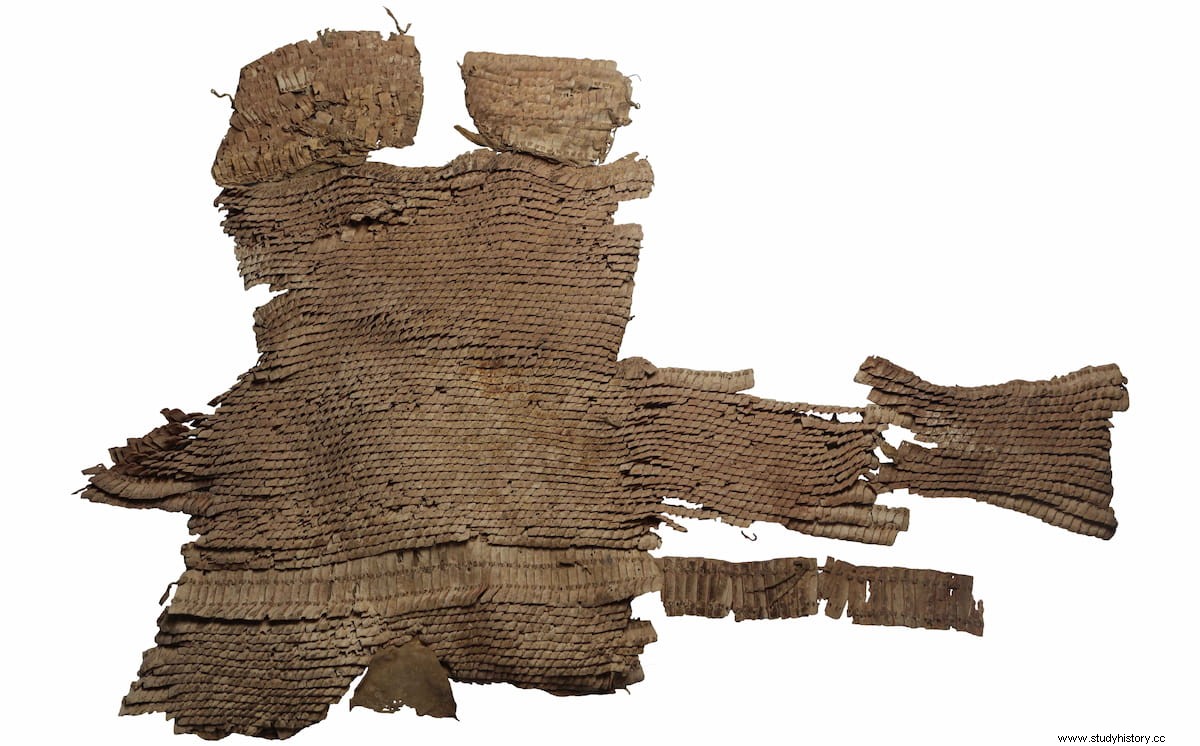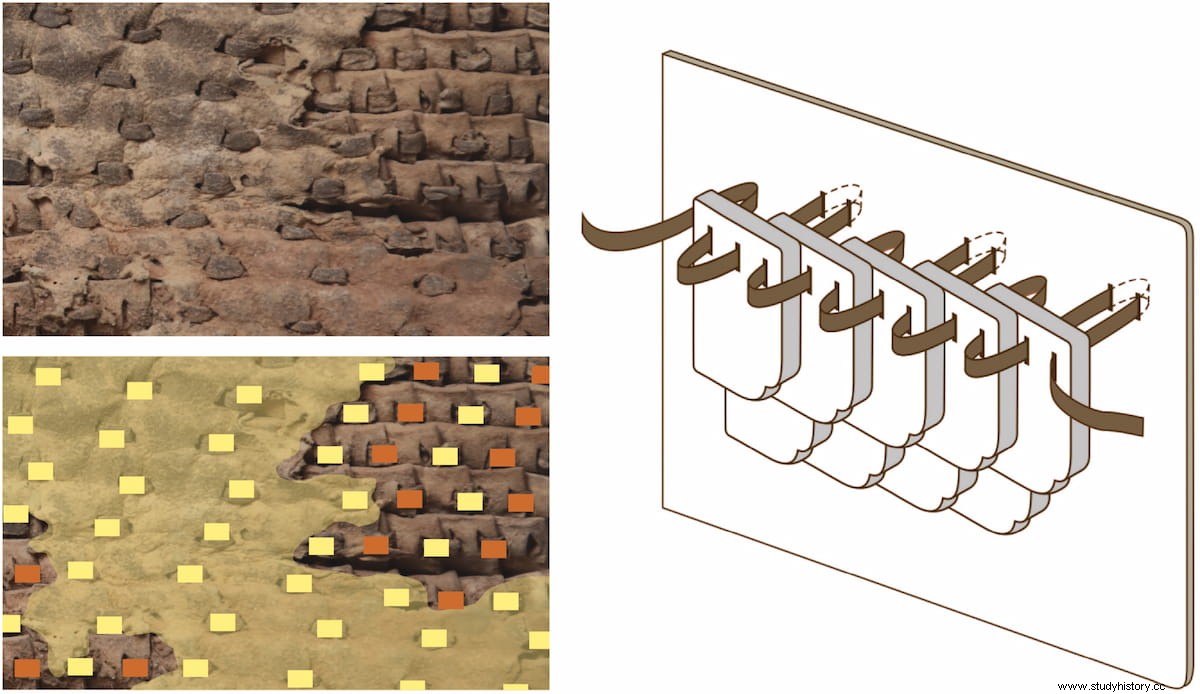Researchers at the University of Zurich have studied a unique leather scale armor found in the tomb of a horseman in northwest China. Design and construction details of the armor indicate that it originated in the Neo-Assyrian Empire between the 8th and 7th centuries BC. before being taken to China.
In 2013, nearly complete leather scale armor was found in the tomb of a man in his 30s near the present-day city of Turfan in northwestern China. This unprecedented find, which has survived the millennia thanks to the area's extremely arid climate, provided the international team led by Patrick Wertmann of the Institute for Asian and Oriental Studies at the University of Zurich with new data on the spread of the technology. military during the first millennium BC.
Scale armor protects the combatants' vital organs like an extra layer of skin without restricting their mobility. The armor consisted of small shield-shaped plates arranged in horizontal rows and sewn to a support. Due to the expensive materials and laborious manufacturing process, armor was highly valuable, and wearing it was considered an elite privilege.

It was rare for them to be buried with their owner. However, the rise of powerful states with large armies in the ancient world led to the development of less precious but no less effective armor made of leather, bronze, or iron for ordinary soldiers.
The researchers used radiocarbon dating to determine the age of the armor between 786 and 543 BC. It was originally made of some 5,444 smaller and 140 larger scales, which together with the leather cords and lining weighed between 4 and 5 kilograms.
The armor resembles a vest that protects the front of the torso, hips, sides, and lower back of the body. It can be put on quickly without the help of another person and it adapts to people of different heights.

The armor was professionally produced in large quantities says Patrick Wertmann. With the increasing use of chariots in the Middle East, from the 9th century B.C. special armor was developed for horsemen. These armors later became part of the standardized equipment of the military forces of the Neo-Assyrian Empire, which stretched from parts of present-day Iraq to Iran, Syria, Turkey, and Egypt.
Although there is no direct parallel to the 2,700-year-old armor found throughout northwestern China, there are some stylistic and functional similarities to a second contemporary armor of unknown origin held by the Metropolitan Museum of Art in New York. It is possible that the two armors were intended for different units of the same army, i.e. Yanghai armor for cavalry and Met armor for infantry.

It is unclear whether the Yanghai armor belonged to a foreign soldier working for the Assyrian forces and took it home, or whether the armor was seized from someone else who had been in the region. Although we cannot trace the exact path of scale armor from Assyria to northwestern China, the find is one of the rare actual pieces of evidence of West-East technology transfer across the Eurasian continent during the first millennium. BC says Wertmann.
